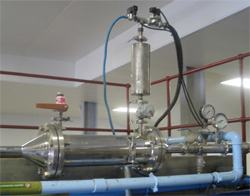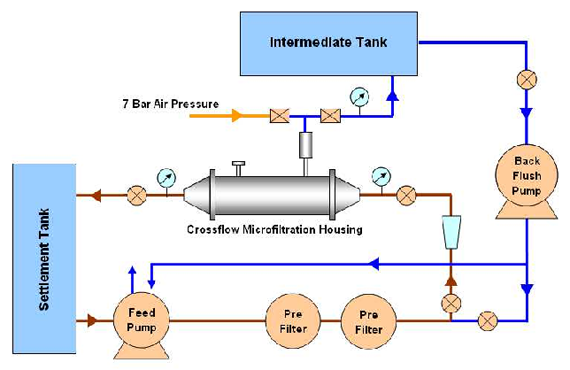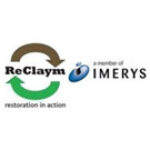The recycling of process water containing radioactive contamination within a Refurbishment Facility using Star-Sep™ Ceramic Crossflow Filtration
This crossflow microfiltration process, using Mantec’s patented star channel Star-Sep™ Ceramic Membranes, renders the filtered water bacterially inactive and free of NORMs, which means that it can be re-used within the process.
Mantec Technical Ceramics Limited has enjoyed success in a number of very different applications with its Star-Sep™ Ceramic Crossflow Microfiltration elements and modules. One such application is the recycling of process water containing radioactive contamination (NORMs) within a Refurbishment Facility at Imerys Minerals Ltd, now Reclaym Ltd, St. Austell in Cornwall.
Imerys Minerals Ltd (\”Imerys\”) first built and commissioned a refurbishment plant at Blackpool Dryers near Trewoon, St. Austell, Cornwall, UK in 2003. Since then it has been operated to safely treat and dispose of Naturally Occurring Radioactive Material (NORM) arising from plant and equipment, which is a by-product of Imerys\’ china clay process. The plant works on a zero emissions to air, water and land.
ReClaym now owns and operates the plant and its assets and has exclusivity with Imerys to treat and dispose of equipment containing NORM present on Imerys sites in Cornwall and Devon. The plant has been renamed the Blackpool ReClaym Plant.
Radioactive contamination can result from industrial processing of china clay; the problems posed by this Naturally Occurring Radioactive Materials (NORMs) create problems in the refining processes of China Clay. The resulting contamination can occur in process pipework, centrifuges and other process equipment within the clay refining industry. Following research and extensive radiochemical analysis, Imerys constructed a state of the art refurbishment facility in Cornwall.
During the research phase, it was concluded that the optimum cleaning method was to use ultra high pressure (UHP) water jetting. UHP jetting is the usual method utilised for scale removal in offshore environments, however, there are few facilities onshore.
The process description is broadly outlined as follows: the contaminated items of equipment are decommissioned and placed into licensed storage pending cleaning and decontamination.
Where possible items will be cleaned and recycled but in other circumstances they may have to be scrapped.
On removal from storage the contaminated items arrive at the facility where they are received into a designated unloading bay.
Next, they are prepared for treatment by either mechanical disassembly or cut using a bandsaw. Following this, the items are subject to a UHP water jet cleaning regime at pressures up to 40,000 psi. This is carried out in a sealed area.

Following decontamination, the water / scale mix is collected in a settling tank where, after settlement, the water is pumped through a prefilter and then through Mantec’s Star-Sep™ Crossflow Microfiltration Membranes (0.2 microns) for re-use. The crossflow microfiltration process, using Mantec’s patented star channel membranes, renders the filtered water bacterially inactive and free of NORMs.
The waste material from the settlement tank is processed and
encapsulated in cement to contain and stabilise the waste prior to disposal via an approved route.
The Mantec Crossflow Microfiltration equipment was originally installed into the facility in 2003 and has since been enhanced by the fitting of an automated backpulsing system. The capacity of the plant was later increased with the installation of 2 x 54 element housings, arranged duty / standby.
The process flow diagram illustrates how the feedstock, contaminated with NORMS and bacteria, is pumped around in a loop through the pre-filter and though the channels of the crossflow membranes. The permeate is shown held in an intermediate tank.

The Star-Sep™ membrane filter has been specifically developed for efficient Crossflow Microfiltration. The filter channel’s unique ‘star’ form increases the filtration area and induces turbulence at lower crossflow velocities.
Not only does this lower the volume compared with a circular channel of the same diameter, but also results in a reduction of the pumping energy requirement. The cost effectiveness of the process is therefore substantially improved.
Mantec’s Star-Sep™ Ceramic Crossflow Microfiltration Elements are available in various sizes and pore diameters. A full range of housings tailored specifically for each application are also available.
Our sister company Xtract Filtration Systems Ltd can engineer, design and supply fully integrated systems for this, and other applications. For more information, please visit our website or contact us on +44(0)1782 377550.


